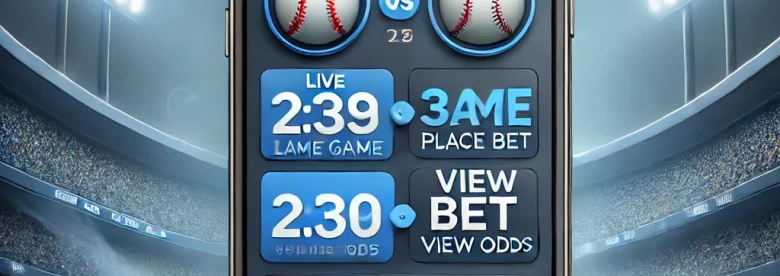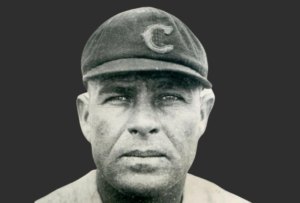Baseball has always been a game of moments. From the crack of the bat to a sudden call to the bullpen, things shift fast. That unpredictability makes Major League Baseball an ideal sport for in-game betting. Unlike pregame wagers, live MLB betting lets you react to what’s happening right now—pitch by pitch, inning by inning. But to turn that real-time opportunity into profit, you’ll need more than a gut feeling. Timing, analysis, and patience play critical roles.
This guide explores how to approach in-game betting with a strategic lens, focusing specifically on MLB. Whether you’re watching the game from the stands or streaming from home, these insights can help you stay one step ahead of the odds.
Timing Is Everything: When to Bet During a Game
Not all moments in a baseball game offer equal betting value. Some are ripe with opportunity, while others are full of noise. The best time to strike usually comes after a momentum shift that the books haven’t fully adjusted for yet.
For example, a bullpen call in the sixth inning can swing the game entirely. If a shaky reliever replaces a dominant starter, live odds often lag behind that shift in leverage. Bettors who act quickly can lock in moneyline or runline value before the numbers catch up.
Similarly, when a team strands multiple runners in scoring position, many casual viewers think they’ve lost their shot. In reality, it could mean offensive pressure is building. Odds might drop slightly in favor of the defense, giving you a better price on the team threatening to score.
Look for subtle moments that point to more than meets the eye—fatigued pitchers, defensive miscues, or an unusually high pitch count. These situations won’t always show up in box scores, but they’ll tip you off to where the game is likely headed.
Read the Matchup, Not Just the Scoreboard
Live betting often triggers snap decisions, especially when a team jumps out to an early lead. A 4–1 score in the fourth inning can feel like a safe indicator, tempting bettors to side with the front-runner. But in baseball, how that lead was built matters more than the number itself.
A single explosive inning might account for all of those runs, while the opposing team quietly racks up hits and hard contact without breaking through—yet. That kind of underlying performance gap often signals a swing in momentum that hasn’t shown up in the score.
When you’re betting on MLB odds in real-time, these are the moments where discipline and insight pay off. Rather than reacting to the scoreboard, ask why it looks the way it does. Are both pitchers living on the edge? Has one team been consistently putting pressure on the basepaths while the other benefits from a single mistake?
Digging deeper into lefty-righty splits, bullpen depth, and lineup construction gives you a clearer picture than the surface-level numbers. If the bottom half of a lineup is coming alive or a high-leverage reliever is already warming up, the smart move might be hiding behind misleading odds. Understanding context—not just totals—gives you the edge when the next pitch changes everything.
Pitcher Performance Trends: Watch for Fatigue and Velocity Drops
Pitchers set the tone in baseball. A sudden dip in fastball velocity, missed locations, or extended innings can signal that a pitcher’s command is slipping. Live bettors who identify these signs early gain a serious edge.
MLB broadcasts frequently display real-time velocity data, providing valuable insights into a pitcher’s performance. A noticeable decline in a starter’s fastball velocity, particularly in the middle innings, often signals fatigue. When combined with a rising pitch count or an increase in walks, the likelihood of a high-scoring inning significantly increases.
Experienced bettors also monitor swings and misses—or the absence of them. A pitcher struggling to get hitters to chase pitches outside the strike zone becomes increasingly vulnerable. While oddsmakers typically adjust lines only after runs are scored, recognizing these signs early allows for more strategic betting decisions.
Don’t underestimate the mental side, either. After an error or long inning, pitchers sometimes unravel, especially if they’re younger or lack playoff experience. Keep your eyes on body language and mound visits. These cues often signal a turning point, and that’s your window to act.
Exploit Market Hesitation on Star Players
Markets tend to lean heavily on reputation, especially during live play. When an ace takes the mound or a power hitter steps into the box, odds often shift in their team’s favor—sometimes even when the current game situation doesn’t support that swing. That’s where sharp bettors find opportunities.
Let’s say a former Cy Young winner gives up three runs in the first two innings but still gets priced like he’s in control. Or a big-name slugger is on deck, and the market reacts as if he’s guaranteed to deliver—despite a poor matchup or recent slump. These are moments when public perception outweighs real-time performance.
To consistently spot these inefficiencies, you need tools that go beyond the scoreboard. This is where FanDuel Research comes in. It offers advanced stats, matchup histories, and live trends that help explain why a number looks the way it does—and whether it’s justified. By pairing that data with what you’re watching on screen, you gain an edge the average bettor doesn’t have.
When you understand how much the market overvalues star power, and you have the right data to back it up, those flashy names stop being intimidating. They become leverage.
Use Live Totals to Capitalize on Slow Starts
Totals—over/under bets—are often the most volatile part of MLB in-game betting. A slow first inning can drive totals down fast, even if the underlying game flow points to offense coming soon.
Take note of high pitch counts, defensive shifts not working, or balls hit hard directly at defenders. These factors suggest that runs may come later, even if the scoreboard doesn’t show it yet. That’s your chance to hit the over at a discount.
On the flip side, if pitchers are inducing soft contact and working quickly, unders can hold value—even if the game starts with a few runs. Most bettors overcorrect based on early scoring, assuming it will continue. In reality, many games settle into a rhythm once the first few innings pass.
Live totals give you multiple chances to readjust your position. If you’ve already taken a side and want to hedge, or if the pace of play shifts dramatically, totals let you stay flexible throughout the game.
Anticipate Bullpen Matchups in Later Innings
Late-game betting offers some of the highest edges—if you know how bullpens stack up. Most casual bettors stop watching or lose focus after the sixth inning, but that’s when live odds often become most vulnerable.
By the seventh inning, most starters are out. If a team’s bullpen is overworked or full of mid-tier relievers, that’s your signal. The opposing team may not be ahead yet, but they’ve likely got the better shot at a comeback.
Keep a mental tally of bullpen usage from the previous games. If a team played a doubleheader yesterday or their closer threw 30 pitches last night, those details matter. Oddsmakers often price late-inning markets based on season-long bullpen performance, not current availability.
Also, matchups continue to matter. If the upcoming hitters are all right-handed and the bullpen brings in a lefty specialist, that mismatch can swing an inning fast. Bet accordingly before that move plays out.
Stay Sharp and Bet with a Plan
In-game MLB betting rewards focus. You’re not just placing wagers—you’re interpreting a live event and acting before the market adjusts. With the right approach, you don’t need to bet every game or chase action. Let the game come to you. Then, when the moment’s right, strike with confidence and precision.






